あなたは間違いなく全体のチョコレートバーを食べた後、「うまく」をしたビールを愛する犬、または犬の話を聞きました。これらの物語の妥当性は、最高の状態で疑問ですが、同様のシナリオを目撃した場合、それはこのありのままの事実を覚えておくことが重要です:米国の世帯の半分以上は、犬や猫を持っており、それらのペットの半分は少なくとも1で行います食品関連の病気のための獣医師への訪問、米国獣医師会からの調査によると。

人々は誤って彼らは、獣医学の研究者が有毒と考えるの食品を食べた後、一見無事だったので、彼らの犬が破壊されないことを決定 - ペットの親は頻繁に彼らの犬がゴミを通して旋条することができますまたはロック解除パントリーを襲撃し、視力のすべてを食べた後参照してください。これは、認知の歪みと科学に知られているものであるか、より一般的と呼ばれる「思考・エラー。」私たちは真実ではない何かを自分自身を納得させる際の思考エラーです。これらの不正確は実証的証拠によってサポートされていない頑固に開催された信念を強化するために使用されている。
人間は、定期的にエラーを考えて苦しみます。それは犬の食事と栄養に来るときしかし、彼らの最愛の犬はしばしば体調不良で価格、いじけ寿命および生活の質の低下を払っています。
原因無知な食事の選択肢に毒素、ホルモンの不均衡および微量栄養素欠乏症の影響は、常に犬の直後に顕著ではありません。しかし、潜在的に致命的疾患や身体の障害の時間結果の期間にわたってこれらのベクターへの定期的な暴露。
私達の犬が健康、活発生活を送るように、すべてのペットの両親は犬の栄養の基本を理解することが重要です。
犬は、同様の歯の構造や腸管を共有食肉目の順で多くの哺乳動物の一つです。肉食動物の栄養ニーズが異なります。どちらも大きな猫や家猫は、例えば、ある絶対的肉食のの 肉から自分の栄養のすべてを引き出す必要があります。草食動物のの 犬や彼らの人間がいる一方で、日常の栄養ニーズを得るために、植物材料を消費雑食のの 肉や植物の組み合わせを食べる必要がある人。
<強い>あなたの犬はオオカミではなく、1のように食べてはいけない。を 彼らは果物や野菜を食べ、雑食性であるため、ステーキを食べたり、骨を噛むように犬に自然なようです。タンパク質や脂肪の源は、品質と消化率よりもはるかに少ない重要です。犬がバランスの取れた菜食で健康的なライフスタイルを維持することができますが、厳密に肉食ダイエットは、日々の主要栄養素と微量栄養素のニーズのすべてを満たしていません。
犬は、タンパク質、アミノ酸、健康的な脂肪、ミネラルやビタミンの安定した流れを必要とします。炭水化物は野生の犬やそのwolven先祖のために必要な栄養素ではありませんが、現代の「家」犬の消化管は、エネルギー源として利用炭水化物に進化してきました。飼いならされた犬は、加工デンプンおよび糖に特異的な消化酵素を持っています。しかしオートミールのような、複雑な炭水化物およびそれらが調理されていない限り、キノアは、消化する犬のために挑戦しています。
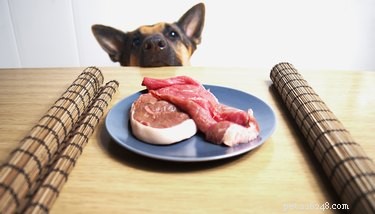
犬はフェッチするエネルギー、再生、さらには睡眠を必要とします。エネルギーはカロリーで測定し、それが主要栄養素として知られる3つの主要な食事成分から来ています。異なる比率で必要ものの、犬は人間が行うのと同じ主要栄養素が必要です。タンパク質、脂肪、炭水化物
犬のための主要栄養素の比率は、年齢に応じて、サイズも繁殖が変化しますが、犬の主要栄養素のニーズのための一般的なガイドラインは以下のとおりです。
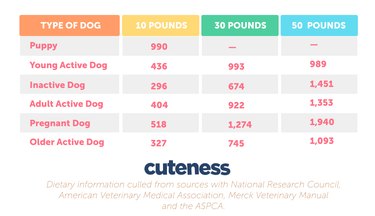
微量栄養素は、開発、病気の予防と福祉に不可欠な食事成分です。多くの場合、イヌのために壊滅的な健康への影響を持つことができる微量栄養素で、ビタミンやミネラル、長期的な欠陥と呼ばれます。あなたの犬は彼または彼女の毎日の微量栄養素のニーズを満たしていることを保証することは、自分の健康にとって極めて重要である。
<強い>ビタミンは犬が必要なのですか?を 犬は人間が必要と同じ毎日のビタミンの多くを必要とする:ビタミンB群、コリン、葉酸、ナイアシン、パントテン酸、リボフラビン及びビタミンKを
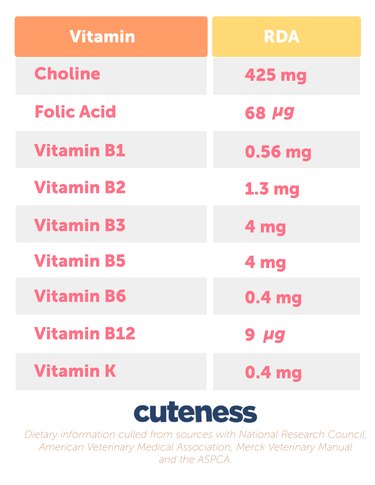
を実行(Do)犬はミネラルが必要ですか?を
人間のように、犬は自分の健康と活力を維持するために、毎日の投与量を必要とし、そこに一般的に必須ミネラルとして知られている12のミネラルがあり、そして。犬のための必須ミネラルは、カルシウム、塩素、銅、ヨウ素、鉄、リン、カリウム、マグネシウム、マンガン、セレン、ナトリウム、および亜鉛
。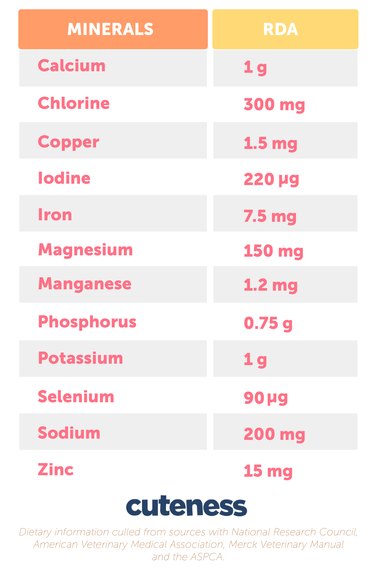
グルテンフリー栄養、生の食品、全体的で自然なダイエット - すべての食品に取り付か西世帯に住む犬のための飼料です。自分のトレンディ米国内および育成を超えたペットの両親は驚くべき速さで障害を食べながら、犬も飼い主が受け入れていることを、最新の流行のダイエットの対象となっている。
犬の食品メーカーは、シアトル小児病院から調査によると、私たちの愛すべき、空腹の犬のニーズ自体は毎年いくつかのダイエットのトレンドを採用彼らの要求所有者の両方を満たすためにさまざまな製品を生産する。
マーケティングのますますハイパー媒介年齢では、ペット店でドッグフードの容器左官ラベルの増加をナビゲートできることが重要です。そのほとんどが、それは注意しなければならない、最高の状態で無意味または誤解を招くです。
<強い>ナチュラルダイエットを
「天然の」という用語は、「フィードのように定義されるか、または成分は単独植物、動物又は採掘ソースから、いずれかの未処理状態または物理的処理、加熱処理、レンダリング、抽出、加水分解、酵素分解または発酵に供された派生しかし生成または化学合成プロセスの対象としないの良好な製造プラクティスに不可避的に発生することができるような量を除いて、の化学的に合成されている添加剤または加工助剤を含有していたではありません 「アメリカの飼料管理の協会関係者による。
翻訳:「ナチュラル」は、必ずしも未処理の意味するものではありません。不謹慎な犬食品メーカーは、実際には、内容が自分の非天然、従来の競合他社とまったく同じことができ、自然な自社製品にラベルを付けるために保険料を支払うことができますが。
<強い>オーガニックダイエットを それは「自然」と「有機」と表示ドッグフードは交換できませんことを理解することが重要です。 「有機」と表示ドッド食品は、USDAナショナルオーガニックプログラムの要件を満たす必要があります。
<強い>生のダイエットを 生の食事の栄養の哲学は、彼らが野生にまだあったかのように飼いならされた犬を養うことを望むペット所有者の間で人気があります。それは本当だが、フリーローミング犬は、多くの場合、動物を食べること。これらの同じ犬が接触した後、寄生虫や必要性の獣医の処置日に感染することも一般的です。多くの人間が信じることを好きなようにハウスは、単に野生のようではありません犬。
また、大規模な食肉生産が厳しく米国食料品店で見つかった生肉の品質が低下しています。肉は、多くの場合、それは安全な消費前に調理する必要がサルモネラ菌などの病原体やバクテリアだらけています。あなたが犬に生の食生活を送ることを主張した場合、有機草飼育、ホルモンフリーの肉とそれらを提供することが重要である。
チョコレートのような生の食品や有毒成分を食べるの影響はすぐに顕著ではないかもしれないが、犬は、長期的、定期的な曝露の結果として、貧しい食事の習慣から健康への影響を被るだろう、覚えておいてください。
<強い>ベジタリアンダイエットを
犬は雑食性で、菜食を通じて、日常の栄養要件を満たすことができますが、アメリカ獣医師会が行った最近の研究では、24市販のベジタリアンドッグフードを評価し、8つだけが彼らのラベルの要件を満たしていることを発見しました。
犬は、毎日のタンパク質やアミノ酸を必要とします。ペット親が獣医栄養士がある場合を除き、定期的に、彼らは必要な栄養素の全てで犬を提供することは極めて困難です。犬のフードブランドはその約束を果たしていない場合は - 、この研究は明らかに共通である - 。犬は栄養不足に苦しむこと彼らの長寿や生活の質の両方を減少させることができ、複数の健康問題につながる
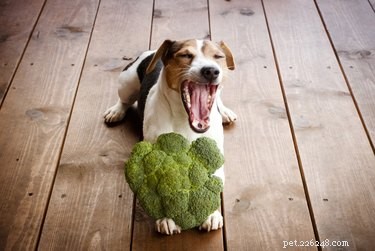
<強い>ホリスティックダイエットを
ホリスティックは、多くの場合、市場のドッグフードに使用される用語です。しかし、「ホリスティック」はアメリカの飼料管理の協会によると、規制されていないラベル付け規則があるとは意味がありません。
<強い>グレインフリーダイエットを 「グレインフリーは」マーケティング用語ではなく、規制食品のラベルです。犬は彼らの食事中の粒子を必要としません。この区別はので、より自身が穀物を含まない食事を食べるペット親にブランドされた非問題のあります。我々は確かまだないですが、また、危険な心臓の状態である拡張型心筋症との間のリンク、および穀物フリーの食事があるかもしれません。
穀物は、多くの市販のドッグフードで共通成分です。用語「穀物の自由は、」平均炭水化物自由必ずしもありません。多くの穀物フリーの犬の製品は、炭水化物源としてジャガイモまたはタピオカなどの食品が含まれています。
<強い>ホームメイドダイエットを
自家製の食事は、ますます人気があり、かつ狡猾なペットの親は彼らの犬のために自宅で栄養価の高い食事を用意することにより電荷をリードしています。この栄養の動きは、多くの場合、より多くの費用と時間がかかるですが、多くの犬の所有者はそれを近い自分の愛する人にそれらをもたらすやりがいの経験を見つける。
それはあなたの犬のための手作りの食事の戦略を採用する際にバランスの取れた食事を準備することが重要です。ありがたいことに、かわいさは、あなたがあなたの犬のための質の高い食事を作るのに役立ちます栄養価の高いレシピや食事の情報のライブラリを提供しています。
水、タンパク質、脂肪、炭水化物、ビタミンやミネラル:犬は彼らの食事からの6つの基本的な要件があります。商業ドッグフードはウェットフード、便利で効果的なオプションの乾燥キブルや缶の大きな袋を作るおり、これらの栄養ニーズを満たすために処方される。
バランスのとれた栄養価の高い食事を提供することが第一の目標ですが、犬は同じものを毎日食べ飽き。犬にいろいろな食べ物を供給すること食事で幸せそれらを保つが、食生活の急激な変化は、嘔吐、下痢につながることができます犬の胃腸内フローラを、混乱させることができることに気づくであろう。
あなたの犬の食事はちょうど彼らが新しい、健康食品のいずれかの意図しない結果を経験していないことを確実にするために、徐々に時間をかけて小さな変更を行い、変更することができます。
このガイドでは、食品の毒性、及びその技術的に安全である食品が、避けるべきである、あなたは犬が食べることのために食品が安全であるかを判断するのに役立ちます。ガイドは、いくつかのセクションに分割されている
<強い>分類についての簡単なメモを このガイドでは、植物学者と栄養士がそれらを分類する方法と一致果物や野菜をグループ化しています。果実は、植物の開花の卵巣から種子ベアリング構造体です。野菜のに対し、根、葉のような他の植物の部分があり、茎。大根、カブとフダンソウは、すべての野菜をしている間りんご、トマト、カボチャのような怪しげな農産物は、果実である。
野菜は食事を盛り上げるための楽しい方法です、そして犬は通常、それらを食べるのが楽しみ。犬が安全に、ほとんどの塊茎や野菜を食べることができますが、いくつかの例外があります。
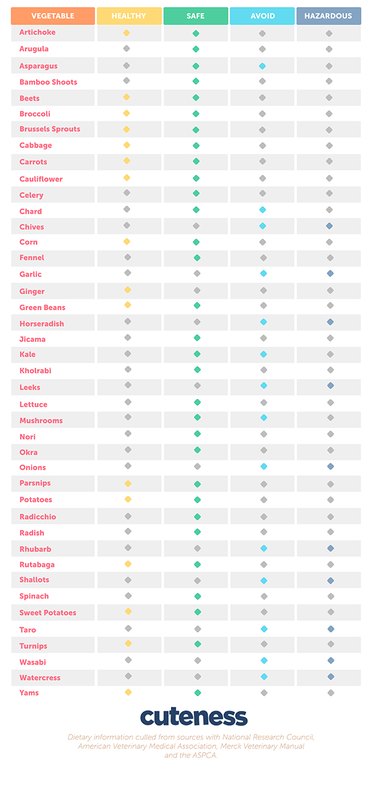
はい、犬はアーティチョークを食べることができます。アーティチョークは、これらの栄養素は病気を防ぎ、犬の免疫系とホルモンの健康をサポートする抗酸化剤、葉酸、ナイアシン、カリウム、ビタミンCの健全な量を含んでいます。
はい、犬はルッコラを食べることができます。ルッコラは、葉酸、カルシウム、ビタミンA、ビタミンCやビタミンKが含まれている人気のアブラナ科の緑であるいくつかの犬ガスや鼻水便や胃腸の問題を引き起こす可能性が困難緑の野菜の多くを消化し、ルッコラを持っている。
はい、犬はアスパラガスを食べることができます。犬が食べることのために低カロリーで、必要不可欠なビタミンやミネラルが豊富、アスパラガスは安全です。多くの犬は噛むとアスパラガスを消化することが困難であるためしかし、そこに同様の利点を提供する他の野菜の多種多様ですが、それほど困難で消費されています。小片にアスパラガスをカットする犬のために簡単にアスパラガスを食べるようになりますだけでなく、窒息の危険を減少します。
はい、犬は竹を食べることができます。筍は、竹の植物の食用の一部であり、竹を小片に調理され、カットされているように犬がいる限り食べても安全です。
はい、犬がビートを食べることができます。高繊維、葉酸、マンガンおよびビタミンCで、ビートは、光沢のある犬の免疫システムやヘルプキープコートのために良いです。犬生野菜を提供する彼らの消化器系のために困難になることができますが、犬は両方の調理や生の大根を食べることができます。
はい、犬はブロッコリーを食べることができます。しかし、ブロッコリー小花はいくつかの犬の深刻な胃刺激に軽度の原因となり得る化合物である、イソチオシアネートが含まれていることに注意してください。別にアレルギー反応の可能性から、ブロッコリーは、カロリー制限や低脂肪食の犬のための低カロリー食品に最適です。
はい、犬は芽キャベツを食べることができます。脇ガス、腸の苦痛または下痢の奇数ケースの電位から、芽キャベツは、胃腸の合併症のリスクを軽減することができる生芽キャベツにわたって調理するためのビタミンB群、ビタミンC及びビタミンK.オプトインなどの栄養素の優れた供給源です。
はい、犬はキャベツを食べることができます。アブラナ科や緑、キャベツはすべて食べるために犬のために安全である品種の数十にしています。赤キャベツ、赤チコリ、エンダイブ、緑のキャベツは、免疫システムをサポートし、ビタミン、ミネラル、繊維が充填されている抗炎症剤です。犬や彼らのペットの親でもない、生のキャベツを消費するの厄介な結果をgassyをお楽しみいただけますので、キャベツ調理犬にサービスを提供するようにしてください。
はい、犬はニンジンを食べることができます。ベータカロチンやビタミンAのフル、ニンジンはダイエットをしている犬のための理想的な犬のために栄養価の高い御馳走です。
はい、犬はカリフラワーを食べることができます。カリフラワーは、それもphytoproteinのまともなソースですカルシウム、葉酸、繊維、カリウムやビタミンKの健全なソースです。ガスの重症度を軽減します犬に提供する前にカリフラワーを調理。
はい、犬はセロリを食べることができます。セロリは安全にコレステロールや血圧の両方を下げることなどがその強力な抗炎症作用の恩恵を受ける犬に供給することができます。セロリは、肥満や糖尿病の犬のために有益である低カロリー、低脂肪のスナックです。セロリは生務めたが、小片に切断することにより、任意の窒息のリスクを軽減するようにしてくださいすることができます。
はい、犬はフダンソウを食べることができます。繊維、ビタミンA、ビタミンCとビタミンKとランチ、フダンソウは犬の大腸、肝臓、免疫系とビジョンの健康をサポートしています。警告される:ケールと同様に、フダンソウは、腎臓や膀胱結石、甲状腺機能低下症および重症の胃の炎症を引き起こす可能性がシュウ酸カルシウムおよびイソチオシアネートを含んでいます。しかし、犬は病気のこれらのタイプを危険にさらすフダンソウの定期的な、大量に食べる必要があるでしょう。
いいえ、犬はチャイブを食べることができません。チャイブは、犬に中程度の毒性を穏やかにしています。チャイブの高用量は、貧血につながることができ赤血球への損傷を引き起こす可能性があります。あなたの犬はチャイブを食べた場合、吐き気、嘔吐、下痢または上昇した心拍数を監視します。
はい、しかし、犬はおそらく、トウモロコシを食べてはいけません。トウモロコシは有毒ではありません。そして消費はガス、嘔吐や下痢などの胃腸障害の通常の症状をもたらすことができる - しかし、食物繊維のその高濃度のため、トウモロコシは犬が消化するために一生懸命です。窒息の高いlikelyhoodがありますので、犬の穂軸にトウモロコシを供給することは避けてください。
はい、犬はフェンネルを食べることができます。フェンネルは、技術的にはニンジンファミリーに属するハーブで、ビタミンA、ビタミンC、銅、マンガン、カリウムが豊富です。多くの果物や野菜の茎、葉や種子とは違って、犬が危険なしにフェンネルの植物のすべての部分を食べることができます。
いいえ、犬はニンニクを食べることができません。ニンニクは犬に有毒です。タマネギとネギと一緒に、ニンニクはn-プロピルジスルフィドを含有するアリウムファミリーのメンバーである - 。貧血を引き起こす化合物、臓器不全および、いくつかのケースでは、死さえ
あなたの犬が食べるピザの盗まれた作品からニンニクの一口場合は、消化器の問題や、暗い、琥珀色の尿の兆候のために彼または彼女を見て。ニンニクの全体の球根を食べた犬はすぐに獣医師に取られるべきである。
はい、犬は生姜を食べることができます!ジンジャーは、それが人間のためであるとして、犬のために有益となります。ジンジャーは、心臓血管の健康を向上させ、消化器系の問題を緩和することができ、関節の痛みを軽減犬、関節炎の軽減症状のための抗炎症人気があります。
あなたは、皮膚やミンチを取り除いた後、あなたの犬の新鮮な、生の生姜を供給することができます。注意してください:彼らはあまりにも多くを食べるときジンジャーは、犬の胸焼けと動揺胃を与えることができます。推奨用量は35ポンド、ミニチュアの品種と大きな犬のため3/4小さじ1/4小さじための下で犬のため小さじ1/2です。
はい、犬は緑色の豆を食べることができます。グリーン豆は低脂肪食にある犬のための健康的な低カロリーのオプションです。グリーン豆は繊維、ビタミンK、ベータカロチンや葉酸の良い源です。犬は、調理や生の緑色の豆を食べることができますが、缶詰グリーン豆はあまりにも塩辛いであり、避けるべきである。
はい、しかし、犬はワサビを食べて避けるべきです。それはハラペーニョやハバネロのようなトウガラシを含んでいませんが、西洋ワサビは食品の種類のスパイシーなスペクトルに落ちます。犬は、単に西洋ワサビのように熱い、辛い食品を消費し、消化するために構築されていません。
はい、犬はヒカマを食べることができる - しかし、ヒカマの植物の茎、葉とつるは犬に有毒です。ヒカマは、繊維、ビタミンB6、カリウムと銅が充填されています。犬は両方の調理や生ヒカマを食べることができます。イヌがそれを消化できない、と皮膚が腸の閉塞を引き起こす可能性があるためヒカマから皮膚を削除することを確認してください。
はい、しかし、犬はケールを避ける必要があります。腎臓と膀胱結石、甲状腺機能低下症および重症の胃刺激の原因ケールにおけるシュウ酸カルシウムおよびイソチオシアネート。ケールを消費犬は、ほとんどすぐに症状を示すことはありません。しかし、時間の経過とともに、これらの毒性化合物のビルドアップは、あなたの犬の健康とウェルネスに強力な影響を与える可能性があります。
はい、犬はコールラビ食べることができます。キャベツやブロッコリーとともに、コールラビはキャベツファミリーのメンバーであり、カルシウムが豊富で、葉酸犬が消化するために、リン、ビタミンB6とビタミンCの生コールラビが困難な場合があります。それを提供する前にコールラビを調理することにより、gassy犬のリスクを軽減。
いいえ、犬はネギを食べることはできません。ネギは犬に有毒であり、避けるべきです。タマネギとニンニクと一緒に、ネギはネギ科であり、溶血性貧血を引き起こすことが知られている。
ネギ少量の最も可能性の高い犬だけdigestional不快感の原因となりますが、ネギ大量のは、臓器不全や死を引き起こす可能性があります。あなたの犬は息を切らし増加し、心拍数上昇、嘔吐や血尿のためニラ、時計を食べていた場合。彼らはネギを消費した後、これらの兆候を示す場合獣医にあなたの犬を取る。
はい、犬はレタスを食べることができます。レタスは、ほとんどが水やプレゼント犬にノー本当の危険、ガスを発生させる外です。徹底的ので、大腸菌やリステリア菌による汚染緑豊かな緑の野菜のリコールの周波数の犬に提供する前にレタスを洗うようにしてください。
はい、少なくとも、犬は人間の消費のために安全なキノコの品種を食べることができます。彼らは有毒ではありませんが、犬はキノコを食べることは避けるべきです。ほとんどの場合、キノコは、胃の痛み、嘔吐や下痢の原因になります。いくつかのケースでは、キノコ中毒は、永久的な肝臓または腎臓の損傷につながる可能性があります。
はい、犬は海苔のような料理の海藻製品を食べることができます。しかし、犬は太陽の下で乾燥させた、ビーチや海藻から直接海藻を食べるべきではありません。乾燥工程は、海藻のこれらのタイプを縮小し、彼らは消化トラックに拡張し、腸の閉塞を引き起こす可能性があります。
はい、犬はオクラ食べることができます。オクラはオクラ緩和するに胃の問題のリスクを調理犬をサービング繊維、葉酸、ビタミンCとビタミンKの良い情報源です。オクラの繊維状の外観ダウンの調理工程の区切りと消化することが容易になります。
いいえ、犬がタマネギを食べることができません。タマネギは犬に有毒です。ニンニクとニラと一緒に、タマネギはアリウムファミリーのメンバーであり、溶血性貧血を引き起こすことが知られています。タマネギの少量は最も可能性が高いだけの犬の消化の不快感が発生しますが、大量に消費することは臓器不全や死を引き起こす可能性があります。タマネギの健康リスクは、様々なまたは玉ねぎは調理や生されているかどうかにかかわらず同じです。犬もオニオン風味の食品を食べてはいけない。
あなたの犬は増加あえぎ、心拍数上昇、嘔吐、血尿のためのタマネギの時計を食べていた場合。彼らは玉ねぎを消費した後、これらの兆候を示す場合獣医にあなたの犬を取る。
はい、犬はパースニップを食べることができます。葉酸、カリウム、ビタミンCやビタミンEのフル - パースニップは、低脂肪または膵臓ダイエットの犬のための理想的な栄養密度の高いスナックです。犬は両方の生と調理パースニップを食べることができますが、それは犬に提供する前に小片に根を剥離し、カットするのが最善です。これは危険を窒息のチャンスを避けることができます。
はい、犬はジャガイモを食べることができます。しかし、犬は、生のジャガイモを避ける必要があります。生のジャガイモは犬に有毒であるソラニンを含みます。健全な御馳走にソラニンと変換ポテトダウンジャガイモブレークを調理。ジャガイモは一口大にC.それの最高のカットポテトに繊維、鉄分、マグネシウム、ビタミンB6とビタミンが豊富であり、任意の調味料なしで犬にそれらを提供しています。
はい、犬は赤チコリを食べることができます。ビタミンB群、銅、鉄、ビタミンK及び亜鉛を搭載した、犬は両方の生と調理済みの赤チコリを食べることができます。犬が食べ過ぎたときに緑豊かな緑のいずれかの様々な、消化器系の問題に注意してください。
はい、犬は大根を食べることができます。繊維、カリウムとビタミンCのフル、大根のヘルプの健康あなたの犬の筋肉や免疫システムを維持する。
いいえ、犬はルバーブを食べることができません。ルバーブ中のカルシウムの酸化物が犬に毒性があり、腎不全を引き起こす可能性があります。ルバーブを食べた後の震えや過剰唾液の兆候を示して犬はすぐに獣医師に行く必要があります。
はい、犬はルタバガを食べることができます。葉酸やカルシウムに満ち、ルタバガは自分の体重を監視する必要がある犬のためのフィッティング低カロリースナックです。唯一の調理食べることができるジャガイモ、とは違って、犬は両方の調理や生ルタバガを消費することができます。
いいえ、犬はエシャロットを食べることができません。ニンニクと玉ねぎのように、エシャロットは犬に有毒です。エシャロットは大量に少量で犬の消化の問題や臓器不全を引き起こす可能性がありますN-プロピルジスルフィドが含まれています。エシャロットを食べて、脱力感、疲労や尿の色の変化の兆しを示して犬が観察のために獣医師に取られるべきである。
はい、犬は、ほうれん草を食べることができます。酸化防止剤、ベータカロチンやビタミンが豊富な、ほうれん草は、犬の食事に健康補助食品です。しかし、ほうれん草はシュウ酸カルシウムを吸収するブロック犬の能力も高いです。大量に、ほうれん草中のシュウ酸は、犬に腎臓の損傷を引き起こす可能性があります。しかし、犬は定期的に臓器障害を開発するためにほうれん草を大量に消費する必要があります。
はい、犬はサツマイモを食べることができます。ビタミンB群、カリウムやビタミンCを十分に備えて、サツマイモのヘルプが健康な目、筋肉や免疫システムを維持する。
犬は皮をむいて調理されたサツマイモを食べる必要があります。犬の生のサツマイモとその皮膚の原因の消化不良、それらはかなりgassyすることができます。糖尿病または太りすぎている犬は、その高血糖指数のサツマイモの摂取量を制限する必要があります。
いいえ、犬は里芋を食べてはいけません。太郎は犬に非常に有毒であるシュウ酸カルシウムの不溶性のバージョンが含まれています。口腔刺激、過度のよだれや嚥下困難として、里芋などを消費した後に症状を呈する犬はすぐに獣医師を訪問する必要があります。
はい、犬はカブを食べることができます。葉酸、マグネシウム、ビタミンB6に満ち、カブは犬の代謝や神経系をサポートしています。カブは、腎機能を刺激することが知られており、多くの場合、腎臓病の犬のために食べ物を推奨している。
いいえ、犬はわさびを食べることができません。わさびは犬に有毒ではありませんが、彼らは彼らの口や喉を刺激することができますので、犬はスパイシーな食品を避けるべきです。犬も困難、下痢や嘔吐につながることができわさびを消化しています。
いいえ、犬はクレソンを食べてはいけません。クレソンは犬に有毒であり、それは犬の原因の嘔吐と下痢という胃腸の刺激物が含まれています。
はい、犬は糸を食べることができます。多くの場合、間違ってはそのいとこ、サツマイモと同じになるようにしながら、糸は同様の利点を提供し、皮をむいて調理された犬に提供する必要があります。
犬が食べても安全です果物<「-ある-果物・安全のため、犬に食べられる」H2 ID =>?はい、犬は果物を食べることができます。しかし、犬は彼らの食事の一部として果物を必要としません。犬の消化器系は、人間のとは異なる働き、そして私たちに有益な果物の多くは、実際にそれらに有害かもしれない。
親指の一般的なルールとして、犬のみ果実の肉質部分を食べる必要があります。彼らはピット、種子、葉や茎を食べることは避けるべきです。果物のこれらの部品は、多くの場合、時間をかけて、犬のために生命を脅かす健康問題につながる可能性、というシアン化合物の微量が含まれています。
犬が消化するために多くの果物の皮は困難な場合があります。多くの所有者は、通知、果物の皮が最も可能性の高い彼らの犬ガス、軟便や胃の不快感を引き起こすことはありませんが。
犬は可能な限り、新鮮な、有機農産物を缶詰の果物やオプトインの過度の糖および防腐剤を避ける必要があります。
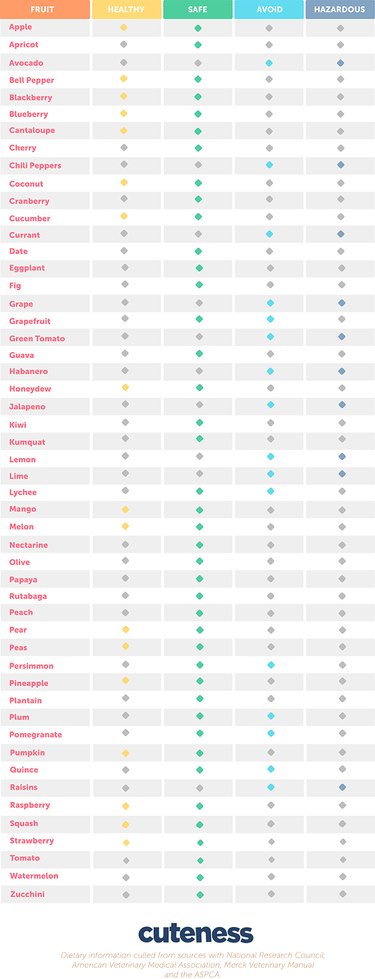
はい、犬はリンゴを食べることができます。カルシウム、繊維とビタミンCと詰められて、りんごはあなたの犬の甘い歯を満たすために健康的な方法です。しかし、犬はシアン化合物の低用量が含まれているリンゴの種を食べてはいけません。シアン化物は犬に有毒である。
あなたの犬の食べるあまりにも多くのリンゴの種、過呼吸、発作、震えや崩壊などのシアン化物中毒の症状のための時計であれば。リンゴの種を食べた後、これらの兆候のいずれかを呈する犬はすぐに獣医に行く必要があります。
はい、犬はアプリコットを食べることができます。カルシウムやビタミンCが豊富で、ヘルプ犬が健康な心臓血管系を維持し、強い骨を促進アプリコット。犬のみアプリコットの肉質の果物を食べて、茎、葉やピットを避ける必要があります。アプリコットの葉は、シアン化合物の微量が含まれています。少量でも犬に対して毒性であり、腎不全をもたらすことができる。
いいえ、犬はアボカドを食べることができません。アボカドは、persin呼吸困難、浮腫や心不全などの犬のための深刻な健康問題を引き起こす可能性が殺真菌毒素が含まれています。それはpersinのアボカドの植物の最高濃度を持っているので、アボカドピットと皮膚が懸念の最大の原因です。しかし、いくつかの獣医研究はアボカド肉は犬のためにあまりにも脂肪であることを主張し、それは、時間の経過とともに、定期的な消費は、膵炎のリスクを増大させる。
はい、犬はピーマンを食べることができます。ベータカロチン、ビタミンB群とビタミンCを搭載した、ピーマンは、ヘルプ犬が健康な皮膚、コートとビジョンを維持することが、低カロリーの御馳走です。
Yes, dogs can eat blackberries. Blackberries are a powerful antioxidant and anti-inflammatory that help dogs maintain oral health, digestive regularity and active gut bacteria.
はい、犬はブルーベリーを食べることができます。 Blueberries are low in calories, but abundant in antioxidants. Blueberries have similar benefits for both dogs and humans:They reduce DNA damage, lower blood pressure and prevent heat disease.
Yes, dogs can eat cantaloupe. Full of antioxidants, beta carotene and vitamin C, cantaloupe helps dogs fights inflammation and maintain a healthy coat. Cantaloupe is high in sugar; so dogs should only eat it in moderation. Dogs should only eat cantaloupe that has been peeled and cut into small pieces.
Yes, dogs can eat cherries. However, it's best for dogs to avoid cherries. Cherries pose more risks to dogs than other fruits because of their size. Because cherries are so small, they are mostly pit and stem — both of which contain trace amounts of cyanide which is toxic to dogs. Also, cherries are a perfectly-shaped choking hazards. If considering whether or not to feed cherries to your dog, be sure to remove the pit and cut them into bite-sized pieces.
No, dogs cannot eat chili peppers. Dogs should never eat spicy foods. Bell peppers and sweet peppers are fine, but chili peppers get their spicy flavor from high concentrations of capsaicin. While capsaicin is not toxic to dogs, even eating a small amount can cause vomiting, diarrhea and burns in the mouth, throat and stomach.
Yes, dogs can eat coconut. Brimming with antioxidants and lauric acid, coconut decreases inflammation and boost dogs' immune systems. Dogs also benefit from coconut oil applied to their skin and coats. Dogs should only eat small amounts of coconut meat at a time to decrease the likelihood of upset stomachs and gas.
Yes, dogs can eat cranberries. Packed with antioxidants and fiber, cranberries help dogs avoid infection and maintain healthy digestion. However, like most fruit, dogs should only eat both cranberries and dried cranberries sparingly because of the risk of digestive issues.
Yes, cucumber is perfectly safe for dogs to eat, and it's often used as an alternative to training treats. This crunchy, low-calorie snack is recommend for dogs who are on either a low-fat or weight-loss diet.
No, dogs can not eat currants. Currants are essentially a dried, black seedless grape. Like all grapes and raisins, currants are also toxic to dogs. Ingestion of even a small amount of currants can result in kidney failure. If you suspect a dog of eating currents, and they are showing signs of abdominal pain, vomiting, diarrhea or thirst — take him or her to the veterinarian.
Yes, dogs can eat dates. Rich in B vitamins and vitamin C, dates are a low-fat, cholesterol-free snack for healthy dogs. Overweight and obese dogs should not eat dates because they are sugary and high on the glycemic index. The pit presents a choking hazard to dogs; so be sure to only share small pieces of date with your dog.
Yes, dogs can eat eggplants. Also known as aubergine, eggplant is low calorie and loaded with calcium and fiber, and it can be a good option for overweight and obese dogs. Because eggplant is a member of the nightshade family, some dogs can have an allergic reaction that presents as digestion discomfort or diarrhea. Cook eggplant before serving to dogs to make digestion easier.
Yes, dogs can eat figs. While rich in fiber, figs are high in sugar; so dogs should only eat them sparingly.
No, dogs cannot eat grapes. Nor can dogs eat raisins, which are dried grapes. Veterinary researchers have yet to identify why grapes and raisins are poisonous to dogs, but they are highly toxic, and exposure can result in death. Signs and symptoms of toxic ingestion are abdominal pain, dehydration, kidney failure, lethargy, loss of appetite and vomiting. Dogs who eat grapes or raisins should be take to the veterinarian immediately.
Yes, dogs can eat grapefruit. However, dogs can only eat the fleshy fruit which is a good source of vitamin C. The rind, leaves, seeds and stem contain toxic essential oils and psoralens that will irritate a dog's skin and cause toxic reactions. Signs of grapefruit poisoning are diarrhea, vomiting and sensitivity to light. Dogs who eat a small amount of grapefruit rind will most likely only suffer mild gastrointestinal distress. Dogs who eat larger amounts should be taken to the veterinarian immediately.
Yes, dogs can eat guava. Filled with dietary fiber and vitamin C, guava can be a healthy occasional treat for dogs. Dogs should only eat guava that has been peeled and de-seeded. As with most fruits, dogs should not eat the stem, leaves, peel or seeds of the guava plant.
No, dogs cannot eat habaneros. Dogs should never be fed anything too spicy, and habaneros are among the spiciest peppers found in most households.
Habaneros get their heat and flavor from high levels of capsicum. Although capsicum isn't toxic to dogs, it will cause burns in the mouth, throat and digestive system. Habaneros may also cause vomiting, diarrhea and pain while defecating. Take dogs who have eaten habanero chilis to the veterinarian immediately.
Yes, dogs can eat honeydew. Overflowing with dietary fiber, vitamin B6 and vitamin C, honeydew can be an occasional healthy snack for dogs. Because of the high sugar content, honeydew is not the best treat for dogs who are struggling with their weight.
No, dogs cannot eat jalapeños. Dogs should never consume spicy foods. While jalapeños are not toxic to dogs, they do contain capsicum. Capsicum will cause burns inside the mouth, throat and stomach. Jalapeños can also cause vomiting, diarrhea and pain while defecating.
A small amount of jalapeño, will most likely not cause your dog any symptoms other than discomfort. If a dog eats a large quantity of jalapeños, they should visit the veterinarian.
Yes, dogs can eat kiwi. While kiwi is more beneficial for humans than it is for dogs, the fleshy portion of the fruit is high in both vitamin C and roughage. Though, roughage is a two-way street. A moderate amount is good for a dog's digestion, but too much can cause diarrhea.
Be sure to remove the fuzzy skin from the kiwi, and cut it into small pieces before sharing with your dog.
Yes, dogs can eat kumquats, but not the peel, leaves or stems. While humans can eat kumquats whole, remove the peel before feeding to your dog. The rinds of citrus fruits contain oils that irritate dogs' skin and causes gastrointestinal distress.
No, dogs cannot eat lemons. While the pulpy fruit of a lemon is edible, the peel, leaves and stem are toxic to dogs. Lemon trees produce phytotoxic compounds called psoralens, linlool and limonene that cause excessive drooling, diarrhea, vomiting and low blood pressure with minor exposure, but loss of coordination, tremors and death in severe cases. Observe your dog closely for 48 hours when they've eaten lemons, and take them to the veterinarian if they exhibit any symptoms.
No, dogs cannot eat limes. Like lemons, the fruit is edible, but the peel, leaves and stems contain psoralen which is toxic to dogs. Any contact can cause illness.
Symptoms of lime poisoning include vomiting, diarrhea and lethargy.
Yes, dogs can eat lychees. However, the rough outer shell and pit should not be consumed.
Yes, dogs can eat mangoes. Loaded with fiber, vitamin A and B vitamins, mango is a healthy treat for dogs as long as it's peeled and the pit is removed.
Yes, dogs can eat melons. In fact, dogs can eat all varieties of melons — watermelon, honeydew, cantaloupe — as long as the rinds have been removed. Also, whenever possible, dogs should avoid the seeds in melons. The seeds can cause intestinal blockage, and the rinds increase the likelihood of gas, diarrhea and upset stomach.
Yes, dogs can eat nectarines. Dogs benefit from the fiber, magnesium and vitamin C in nectarines, but always remove the pit before sharing with your dog.
Yes, dogs can eat olives. Olives are a nutritious source of copper, fiber, iron and vitamin E. However, they can be quite high is salt and fat — which always heightens the risk of a dog developing pancreatitis. But olives are perfectly safe in small quantities.
Yes, dogs can eat oranges. Oranges are a good source of vitamin C and dietary fiber. But because of the high sugar content, oranges should only be eaten in moderation. The rind of an orange contains acidic citrus oils that many dogs find difficult to digest. For this reason, only feed dogs the fleshy fruit of oranges.
Yes, dogs can eat papaya. Rife with calcium, vitamin E and vitamin C, papaya keeps you dog's cardiovascular and immune systems healthy. Dogs should only eat the delicious, red fruit because papaya rinds and seeds contain cyanide which is toxic in large doses.
Yes, dogs can eat peas. Peas contain healthy levels of vitamin A, B vitamins and vitamin K. Your dog can enjoy unseasoned fresh, frozen or thawed peas, but avoid serving them canned peas. Like most canned vegetables intended for human consumption, canned peas contain high levels of sodium that are harmful to dogs.
Yes, dogs can eat peaches. Filled with fiber and vitamin A, peaches help dogs maintain healthy gums and shiny coats. In addition to being a choking hazard, the peach pit contains a sugar-cyanide compound called amygdalin that can be toxic after repeated exposure.
Yes, dogs can eat pears. Generous in fiber, vitamin A and vitamin C, pears are safe for dogs to eat in small amounts. Avoid feeding your dog the cores of pears because, like many fruits, the seeds contain trace amounts of cyanide. But even a single core's worth of seeds is enough to cause cyanide poisoning in small dogs.
Yes, but dogs should avoid eating persimmons. Persimmons are a seedy fruit with a large pit. The risk of choking, intestinal blockage and possible cyanide poisoning outweigh any potential benefit from eating persimmons. Especially, considering fruit is not an essential component of a dog's diet.
Yes, dogs can eat plantains. Plentiful in dietary fiber, plantains are healthy anti-inflammatory snack for dogs. Raw plantain often causes gas in dogs. Cooking them will mitigate the increased risk of gas in dogs.
Yes, but dogs dogs should avoid eating plums. Dogs can safely eat a plum's fleshy fruit, but the stem, leaves and pit are toxic. Plums are sugary and high on the glycemic index; so dogs who are overweight shouldn't eat them. Dogs who exhibit symptoms such as dilated pupils and difficulty breathing after consuming plums should be taken to the veterinarian.
Yes, dogs can eat pineapple. Brimming with both B vitamins and vitamin C, pineapple is a nutrient-dense snack for dogs. However, dogs who are suffering from weight issues should steer clear of pineapple because of the fruit's extremely high concentration of natural sugars.
Yes, dogs can eat pomegranate. However, dogs should stick with pomegranate extracts and pomegranate-enhanced treats and avoid the actual fruit. While pomegranate promotes heart and liver health, the actual pomegranate seeds are rich with tannins that cause dogs to have an upset stomach.
Yes, dogs can eat pumpkin. Filled with soluble fiber, pumpkin helps dogs maintain healthy digestion and eases symptoms of diarrhea. The fiber in pumpkin acts as a prebiotic which stimulates the production of probiotics — the healthy gut bacteria that inhibits the spread of harmful bacteria. Dogs can eat cooked, raw and plain pumpkin from a can. A few tablespoons of plain, canned pumpkin is preferred because it contains a higher concentration fiber compared to other forms.
Yes, dogs can eat quince. Brimming with antioxidants, calcium and potassium, quince helps dogs regulate blood pressure and inhibit oxidative damage from free radicals. However, like apples and pears, dogs should only eat the fleshy fruit and not the seeds, stem or leaves of the quince fruit. The foliage of quince fruit contains trace amounts of cyanide which is toxic to dogs.
Yes, but dogs should avoid eating raspberries. While raspberries are a low-calorie, low-sugar treat that is a beneficial antioxidant in moderate amounts, they also contain a high level of naturally-occurring xylitol. Xylitol is used as an alternative sweetener in human foods, but can cause hypoglycemia in dogs if consumed in large amounts.
Yes, dogs can eat strawberries. Much like their blue cousins, strawberries are overflowing with antioxidants, fiber and vitamin C. Strawberries even posses an enzyme that clean dogs' teeth.
Yes, dogs can eat squash. Loaded with antioxidants and B vitamins, squash is an anti-inflammatory that boosts a dog's immune system and prevents infection. It's best to serve dogs plain, cooked squash because raw squash will cause dogs stomach aches, bloating and gas.
Yes, but dogs shouldn't eat tomatoes. While tomatoes are not toxic to dogs, they do contain tomatine which is dangerous compound for dogs. When eaten in large amounts, tomatine can cause stomach aches and diarrhea. If your dog eats tomatoes, they will most likely be ok. But watch for signs of allergies or digestive discomfort.
Can dogs eat cooked tomatoes? Yes, but be aware that canned, cooked tomatoes or tomato-based sauces often contain too much sodium for dogs to eat in a single serving. The cooking process diminishes the amount of tomatine, leaving a healthy dose of vitamins and the powerful anti-oxidant lycopene. Lycopene has been proven to reduce risk of degenerative disease in dogs.
Grape tomatoes and cherry tomatoes, however, contain only trace amounts of tomatine. They are generally considered safe to eat as an occasional treat. While they do not offer as many phytonutrients as the conventional tomato, grape and cherry tomatoes contain vitamin A and vitamin C, along with some fiber. Be sure to reduce the risk of chocking by cutting cherry and grape tomatoes in half before serving to dogs.
Be sure to keep dogs away from tomato stems and leaves. The green portions of most vegetable plants are toxic to dogs, and consuming them can cause digestive maladies like vomiting and diarrhea. Dogs may also experience tremors, seizures and a loss of coordination after ingesting tomato stems and leaves.
No. Unripe, green tomatoes contain a high concentration of solanine. Solanine dissipates as the tomato ripens, but combined with tomatine, green tomatoes are exceptionally dangerous to dogs. Common sign of solanine and tomatine poisoning are:
Yes, dogs can eat watermelon. Rich in both B vitamins and vitamin C, watermelon is a low-calorie treat that is ideal for overweight dogs. However, dogs should avoid eating watermelon seeds and rind. The rind can increase the likelihood of gastrointestinal distress, and the seed can cause intestinal blockage.
Yes, dogs can eat zucchini. Brimming with fiber, vitamins and minerals, zucchini is a healthy, low-calorie treat for dogs. Dogs can eat both raw and cooked zucchini, but cooking the zucchini decreases the severity of gas.
Dogs are natural meat eaters. They love meat more than most humans. However, the seasonings used to spice meat like garlic and onions are toxic to dogs. Furthermore, dogs should not eat salt, butter and other fats in the same quantities that humans indulge in. Dogs should only eat plain, uncooked meats without spicy seasonings and added fats.
Dairy products are the leading source of food intolerance in dogs. Most dogs are somewhere on the lactose intolerance scale — but baring a specific food allergy, most dairy can be safely consumed by dogs.
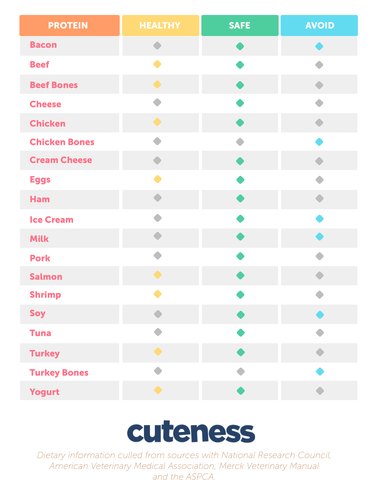
Yes, dogs can eat bacon. However, dogs should avoid bacon because the high fat and salt content heightens the risk of developing pancreatitis. Sorry, dogs.
Bacon can also cause dogs to "bloat." Bloating occurs when the stomach expands because of excessive gas, food or fluid. The salt in bacon makes some dogs dehydrated and drink an excessive amount of water to satiate their thirst. The resulting bloat puts pressure on other organs in the body.
Dogs should only eat small amounts of cooked bacon. Never feed dogs raw bacon because of the presence of the parasite trichinella spirals larvae, which causes the parasitic infection know as trichinosis. Symptoms of trichinosis in dogs includes upset stomach, fever, pain, stiffness, vomiting and diarrhea. Dogs who eat raw bacon should be taken to the veterinarian.
Yes, dogs can eat beef. Brimming with protein and essential fats, beef promotes muscle growth and helps dogs maintain a healthy coat. Dogs should eat grass-fed, hormone-free and antibiotic-free beef whenever possible.
Dogs should avoid raw beef. While raw food is a controversial topic for many pet parents, large-scale industrial meat production has reduced the quality of Western beef for both humans and dogs. The risk of salmonella and other bacterial contamination is too great.
Yes, dogs can chew beef bones. However, dogs should only eat raw beef bones and avoid cooked bones. Cooking softens the bones which can splinter into shards and cause choking and internal abrasions. Plus, cooking removes the nutrients anyway.
A beef shank bone is good example of a the type of bone to give a dog.
Yes, dogs can eat cheese. Filled with calcium, protein and essential fats, cheese provides many of the macronutrients and amino acids dogs needs on a daily basis. Cheese is calorically-dense; so dogs should only eat small amounts of cheese as a healthy treat.
Not all dogs digest dairy products well. Dogs who are lactose intolerant should avoid cheese.
Yes, dogs can eat chicken. Chicken is low in fat, but high in protein which makes it the perfect food for overweight dogs and dogs who are on a diabetic diet.
Dogs should not eat chicken that has been prepared for humans. People simply eat more salt and seasoning than dogs can safely handle. Often chicken is prepared with ingredients that are toxic to dogs such as onion and garlic. Dogs can eat plain, cooked chicken.
Never feed raw chicken to dogs. While the movement for raw food is growing, contemporary poultry farming has diminished the quality of meat for humans and dogs. Consult a veterinary dietician before putting your dog at risk of salmonella or other bacterial poisoning from raw chicken.
No, dogs should not eat chicken bones. There was a time when humans tossed the family dog a chicken carcass to chew on. But we now know that chicken bones are too small for dogs to safely chew without risk of choking or internal abrasions from splintered chicken bones.
Yes, dogs can eat cream cheese. Rich in calcium, fatty acids and vitamin A, cream cheese helps dogs maintain strong bones and healthy coats. Cream cheese is not a natural food for dogs to eat, and they should only consume it as an occasional treat.
Yes, dogs can eat cottage cheese. Cottage cheese is a low-fat, high-protein snack for dogs. However, some dogs do not digest diary well. So dogs who are lactose intolerant should not eat cottage cheese.
Yes, dogs can eat eggs. Packed with protein, eggs help dogs maintain strong muscle and healthy digestion. They even help settle upset stomachs.
Dogs should only eat plain, cooked eggs. Raw eggs present a risk of salmonella poising to dogs. It's not recommended to feed dogs fried eggs because the fat and seasonings are too much for dogs to safely eat.
Yes, dogs can eat ham. Packed with protein, ham is a delicious treat for dogs. Nevertheless, there are concerns with feeding dogs ham. Primarily, ham is fatty. Dogs will develop pancreatitis and possibly diabetes due to weight gain when they eat overly-fatty foods too frequently.
Dogs should never eat ham that has been prepared for humans because it's typically too salty and seasoned, and there is also the possible presence of ingredients like garlic that are toxic to dogs. Dogs should only eat plain, unseasoned ham as an occasional treat.
Yes, dogs can eat ice cream. Ice cream is not toxic to dogs. Still, dogs should not eat ice cream because it's rife with sugars and fat. Both of which can lead to weight gain, obesity and pancreatitis with regular, long-term exposure.
Another problem with feeding ice cream to dogs is that many adult dogs do not have the lactase enzyme to process the lactose in ice cream, which leads to bloating, constipation or diarrhea.
If you do feed your dog ice cream, be sure that it does not contain toxic ingredients like chocolate.
Yes, dogs can drink milk. Milk is not toxic to dogs, and most are able to safely drink both cow's milk and goat's milk. Because many dogs have varying degrees of lactose intolerance, milk should only be consumed occasionally.
Yes, dogs can eat pork. However, dogs should avoid pork that has been prepared for humans. They simply can not eat the same amount of salt and seasoning that people do. Plus, pork is often prepared with ingredients that are toxic to dogs such as garlic or onion.
Dogs can eat plain, cooked pork. Never feed a dog raw pork because of the presence of the parasite trichinella spirals larvae, which causes the parasitic infection know as trichinosis. Symptoms of trichinosis in dogs includes upset stomach, fever, pain, stiffness, vomiting and diarrhea. Dogs who eat raw pork should be taken to the veterinarian.
Pork is also high in fat and heightens the risk of developing pancreatitis. Dogs should only consume pork as an occasional protein-packed treat.
Yes, dogs can eat salmon. Loaded with protein and omega-3 fatty acids, salmon helps dogs maintain strong muscles and healthy coats. Salmon is also fairly low in fat which makes it a good food for overweight dogs or dogs who are on diabetic diets.
Dogs should only eat plain, cooked salmon. Raw salmon contains the Neorickettsia helminthoeca parasite which causes salmon poisoning disease.
Yes, dogs can eat shrimp. Full of antioxidants and vitamin B12, shrimp is a healthy snack that supports a dog's metabolic processes and digestive health. Shrimp is an ideal treat for dogs who are obese or on low-fat diets.
Dogs should not eat raw shrimp. Uncooked shellfish contain harmful pathogens that can lead to bacterial infections. Only feed dogs shrimp that's is plain, peeled and cooked.
Yes, dogs can eat soy. Soy is not toxic to dogs, and it's a common ingredient in may commercial dog foods. However, many veterinarians and dietitians warn against the long-term health impacts of soy-based products like tofu, edamame and soy protein.
New evidence supports the assertion that soy is unhealthy for dogs and humans. Soy is an estrogenic endocrine disruptor that puts hormones into an unbalanced state, which can lead to thyroid problems, obesity and diabetes.
Yes, dogs can eat tuna. However, dogs should limit their consumption of tuna because it contains higher levels of mercury than other fish. Instead of tuna, consider fresh fish like salmon, herring and flounder.
If your dog eats your tuna sandwich, they will not suffer any immediate side effects. But regular consumption of large amounts of tuna can lead to mercury poisoning. Symptoms of mercury poisoning in dogs include hair loss, abdominal swelling, loss of coordination and vomiting blood. Dogs who show any of these signs, especially after eating tuna, should visit a veterinarian immediately.
Yes, dogs can eat turkey. Replete with healthy fats and protein, turkey provides dogs with many of the daily macronutrients and amino acids they need to stay vigorous and healthy.
Dogs should not eat Thanksgiving turkey or turkey that has been prepared for humans. Generally, these types of turkey recipes contain toxic ingredients or are too rich in salt and fat for dogs to safely consume. Dogs should only eat plain, skinless turkey that has been cooked.
While many pet parents have adopted an alternative raw-food philosophy, dogs should not eat raw turkey. The Western meat industry produces poor quality poultry for both dogs and humans — neither should risk salmonella or other assorted bacterial poisonings.
No, dogs should not eat turkey bones. Once a common practice, veterinary standards now identify poultry bones as being too brittle for dogs to safely chew on. Brittle bones break and splinter too easily, and the resulting shards present hazards in the forms of choking and internal abrasions and cuts.
Yes, dogs can eat yogurt. Stacked with calcium and protein, yogurt helps dogs develop and maintain strong bones and muscle. Plus, dogs and humans reap similar benefits of the probiotics found in yogurt.
Dogs should only eat plain, low-fat yogurt. Many brands of human yogurt contain sugars, artificial sweeteners and other ingredients that are problematic for a dog's health.
Dogs who are lactose intolerant should avoid yogurt.
Dietary restrictions are the crux of human wellness crazes, and the most common victims are carbohydrates sourced from grains, beans and nuts. But are grains safe for dogs to eat? Are beans and nuts healthy for dogs?
The reality is that grains, nuts and beans are another dietary non-issue for dogs, as they don't rely on any of these food sources for their daily macronutrients. Which is not to say that these foods don't provide nutrition to dogs. Rather, aside from dogs who suffer food allergies, restricting these types of food are more of a marketing ploy targeting health-conscious humans concerned about the health of their best friends.
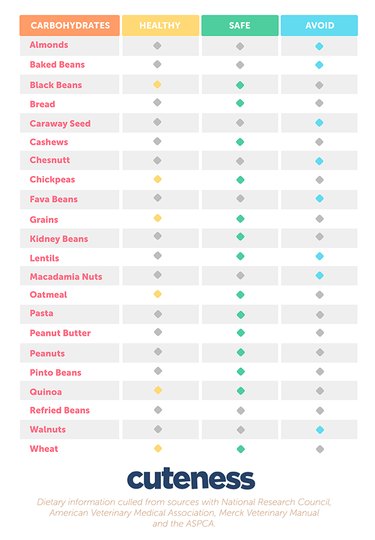
No, dogs should not eat almonds. While almonds are not as toxic to dogs as other varieties of nuts, they are not easily digested and can obstruct the esophagus, intestines and windpipe.
Almonds are also too fatty for dogs to safely eat. Over time, dogs develop pancreatitis from too much rich, fat human food.
No, dogs cannot eat baked beans. While baked beans are not toxic to dogs, they do contain tomatoes and are high in both fat and sugars — which heightens the risk of developing pancreatitis. Pancreatitis occurs when a dog's pancreas swells or becomes inflamed, and it is typically caused by high-fat diets.
Yes, dogs can eat black beans. Loaded with fiber and protein, black beans help dogs burn fat and regulate blood sugar.
Dogs should eat cooked black beans and avoid eating raw or canned varieties. Raw black beans are hard for dogs to digest, and canned products typically have too much salt or seasonings like onion and garlic that are toxic to dogs.
Yes, dogs can eat bread. Although there is little reason for dogs to eat bread, consuming it occasionally will not harm them. Problems can arise when dogs sneak sweet breads that are made with raisins or savory breads that contain onion or garlic. These types of ingredients are toxic to dogs, and longterm, regular consumption can lead to health problems.
Bread is mostly refined carbohydrates which convert to sugar once digested. It's best for dogs with weight problems to avoid bread.
No, dogs can not eat caraway seeds. Many seeds are toxic to dogs, and caraway seeds are no exception. Commonly found in baked goods, these seeds contain carvone and limonene which cause mild vomiting and diarrhea.
Yes, dogs can eat cashews. Provided that your dog does not have a nut allergy, which can be very dangerous, cashews are safe for dogs to eat.
There are a few concerns with dogs and cashews. Primarily, cashews are often roasted and packaged alongside other nuts, like macadamia nuts, that are toxic to dogs. Secondly, cashews are fatty. Dogs with a weight problem or who are on a pancreatic diet should avoid eating cashews.
はい。 Chickpeas are considered a healthy food for dogs to eat, and they're even used as ingredients in some commercial dog food products. Also known as garbanzo beans, chickpeas are a source of plant-based protein, fiber, iron and phosphorus. Be sure to serve only plain, cooked chickpeas to dogs. Many pre-made chickpea foods that have been prepared for humans contain spices that may be harmful to dogs such as nutmeg or excessive amounts of salt.
No, dogs cannot eat fava beans. While many varieties of legumes are safe for dogs to eat, the PHA (phytohemagglutinin) in fava beans is toxic to dogs. Fava beans are not lethal, but PHA poisoning presents with excessive diarrhea and vomiting, which will lead to dehydration. Dogs who eat fava beans should be examined by a veterinarian immediately.
Yes, dogs can eat grains. Unless your dog has an allergy — which is less common in canines than humans — grains are a healthy source of carbohydrates, fats and antioxidants. There are many types of grain such barley, corn, farro and quinoa, and they all have a different nutrient profiles which are both beneficial for dogs.
Yes, dogs can eat kidney beans. But be sure to feed your dog cooked kidney beans. Raw legumes contain lectin, which is toxic in large quantities to dogs. Kidney beans are a good source of plant-based protein, copper, folate, iron, manganese and vitamin K.
Yes, dogs can eat lentils. But raw lentils should be avoided. Like all legumes, raw lentils contain lectin that can cause gas and diarrhea when consumed in large quantities. Cooking lentils breaks down the lectin, making them safe for dogs to eat.
No, dogs cannot eat macadamia nuts. Macadamia nuts are toxic to dogs and even a small amount can cause poisoning symptoms including ataxia, tremors, weakness in the hind legs and vomiting. Dogs who eat macadamia nuts in either cookies, baked goods or otherwise should be taken to the veterinarian.
Yes, dogs can eat oatmeal. Oatmeal is high in antioxidants, fiber and linoleic acid, and it's an alternative carbohydrate for dogs who are sensitive to wheat or grain. The B vitamins in oatmeal help keep your dog's coat healthy.
It's best to use water — rather than milk — when preparing oatmeal for dogs, who do not process lactose as easily as humans. Raw oatmeal is difficult for dogs to digest; so always serve it cooked. Oatmeal should also be prepared plain without added sugars or fats, and avoid feeding dogs highly-processed brands of instant oatmeal.
Yes, dogs can eat pasta. While it certainly isn't offering nutrients their normal diets are not already providing, pasta will not harm dogs. Still, whole wheat pasta is low on the glycemic index and is an alternative carbohydrate for diabetic dogs.
Yes, dogs can eat peanuts. Packed with protein, healthy fats and B vitamins, peanuts are a healthy snack for dogs. However, it's best to serve dogs plain, unsalted peanuts. The salt and oil from roasted peanuts are too rich for dogs and can even cause pancreatitis, but your dogs will be fine if they eat a few off the floor.
Yes, dogs can eat peanut butter as long as it is not sweetened with xylitol. Most peanut butter is safe for dogs to eat, Xylitol is a sugar substitute, and it triggers hypoglycemia in dogs by dramatically lowering blood sugar levels. Xylitol-induced hypoglycemia can be life threatening if left untreated.
Yes, dogs can eat pinto beans. However, like most legumes, dogs should avoid eating raw or canned varieties. Rich in plant-based protein and fiber, pinto bean are an excellent meal for dogs on low-calorie or low-fat diets.
Yes, dogs can eat quinoa. Quinoa is loaded with protein and carbohydrates, and it's often used as an ingredient in high-quality dog foods. Quinoa does contain a trace amount of saponin which can cause some dogs allergic reactions like vomiting, diarrhea and constipation. Cooking quinoa breaks down the saponin and mitigates the risk of digestive issues.
No, dogs cannot eat refried beans. Unlike common varieties of beans, refried beans are a human dish that contains unhealthy amounts of salt and fat, spices that cause irritation like cumin and chili powder, and garlic and onion — all of which are harmful to dogs.
No, dogs should not eat walnuts. Walnuts are not toxic to dogs, but they do cause gastric intestinal upset and stomach blockage because dogs' digestive systems have difficulty breaking down the roughage.
Yes, dogs can eat wheat. Dogs do not have a nutritional requirement for wheat, but unless your dog has an allergy — which is less common in canines than humans — wheat is a healthy source of carbohydrates, fats and antioxidants. Wheat even has fibers that feed beneficial gut bacteria and helps keep dogs regular.
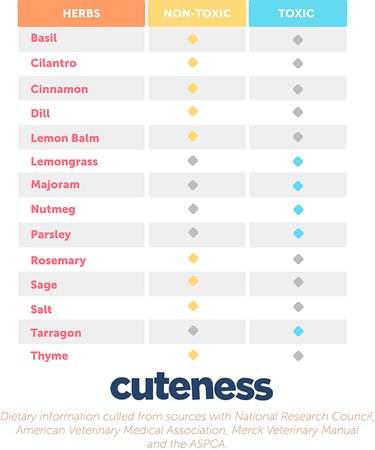

The lives of dogs and humans have been intertwined for thousands of years. Winning us over with their unconditional love and loyalty, dogs have become indispensable to humans in most societies. Whether as companions, guardians or sniffers — dogs have earned a permanent place among their humans.
Seeing as how they live among us, dogs are in constant contact with the human world. Our cars confuse and delight them. Our televisions and screens intrigue them. And our food — well, it's well known that dogs desire human delicacies more than anything. It's vital that we understand which of the foods, drinks and vices are harmful and potentially lethal to dogs.
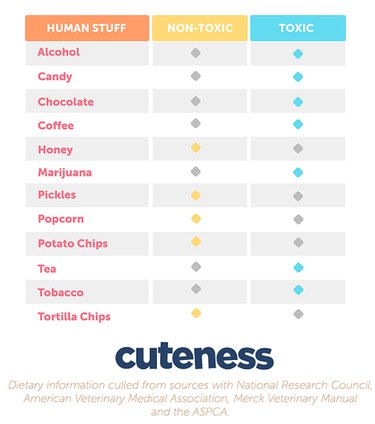
No, dogs cannot drink alcohol. While alcohol toxicity in pets is not necessarily a common phenomenon, most pet parents do not regularly expose their pets to alcoholic beverages.
Alcohol will have a similar effect on dogs as it does on humans. However, due to their size, it does not take much for an alcohol buzz to turn into a trip to the veterinarian. Signs of alcohol toxicity in dogs include decrease in body pressure and blood pressure, difficulty breathing, seizures and lethargy.
No, dogs cannot eat candy. If your dog has gotten into the Halloween or holiday candy, it's important to determine exactly what they have eaten. Sweets will most likely just give your dog a stomach ache or diarrhea, but chocolate, nut-based confections and artificially-sweetened treats can do more harm.
Many candy bars could contain nuts that are toxic or troublesome to dogs such as walnuts or macadamia nuts. Some candy is sweetened with xylitol, which is toxic to dogs in small doses. Chocolate and caffeine are the main concern with dogs eating candy, as both contain methylxanthines which are potentially fatal for small dogs.
Dogs who have eaten candy and show signs of trembling, respiratory difficulty and vomiting should visit the veterinarian.
No, dogs cannot eat chocolate. Chocolate contains the methylxanthines theobromine and caffeine, both of which negatively impact dogs' central nervous systems and cardiovascular systems.
Signs of chocolate poisoning typically present within 6-12 hours after consumption and include tremors, abnormal hear rate, collapse, seizures and vomiting.
Large dogs can handle more theobromine and caffeine than small dogs. But regardless of size, chocolate can be fatal for dogs.
No, dogs cannot drink coffee. The caffeine in coffee and other caffeinated beverages is toxic to dogs. Caffeine is actual in the same family of methylxanthines as theobromine, which is the ingredient in chocolate that is toxic to dogs.
Accidentally drinking a bit of coffee will probably not adversely affect your dog, but ingesting diet pills, multiple coffee beans or an entire frappaccino can be fatal for small dogs.
Dogs who are suffering caffeine poisoning may exhibit signs of tremors, excessive panting and thirst, accelerated heart rate or seizures. Take dogs who have consumed coffee to the veterinarian for a consultation.
Yes, dogs can eat honey. Honey is believed to have a wide variety of unsubstantiated health benefits including allergy relief and anti-inflammatory properties. Regardless of its efficacy as medicine, honey is relatively harmless to dogs.
The high sugar content is the principle concern with feeding dogs honey. Dogs who are obese or diabetic should avoid eating honey.
Generally, dogs can eat pickles. Dill pickles are safe for dogs to eat, but the same may not be said for other varieties of pickles. Onions and garlic are popular pickled vegetables, but they are also toxic to dogs and can cause anemia. Similarly, many brands of pickles may include garlic as a seasoning in the pickle brine. If you are unable to identify all of the ingredients in a jar of pickles, then keep them away from your dog.
Even with the absence of toxic ingredients, pickle brines are usually too salty for dogs to safely consume. Excess levels of salt leads to bloat, vomiting, diarrhea, ataxia and seizures.
Yes, dogs can eat popcorn. Bustling with essential minerals like magnesium, phosphorous and zinc, popcorn can be a tasty treat that satisfies a dog's nutritional needs.
The problem with popcorn is that dogs should not eat the butter, oils and salt that top the popcorn. Dogs simply get too fat when they eat food intended for humans. With that in mind, it's best to prepare a small bowl of plain, air-popped popcorn for your pup during your next movie night.
No, dogs should not eat potato chips. While not necessarily toxic for dogs, potato chips are high in calories and fat and can lead to obesity and even diabetes.
Dogs who eat too many potato ships could develop sodium poisoning because of the high amount of salt. Symptoms of sodium poisoning include dehydration, vomiting, diarrhea and seizures.
Furthermore, many brands of potato chips are produced with garlic and onion powders which are both toxic to dogs.
No, dogs should not drink tea. Tea contains caffeine which elevates the heart rate and can be toxic to dogs when enough is ingested. Symptoms of caffeine poisoning include tremors, seizures, collapse and vomiting.
No, dogs cannot eat tobacco, cigarettes or cigarette butts. A toxic dose of nicotine for a dog is roughly .5 milligrams per pound of body weight. The average cigarette contains between 9-30 milligrams.
Symptoms of nicotine poisoning begin with an hour after ingestion and include tremors, drooling, hallucinations, vomiting and increased heart rate.
No, dogs should not eat tortilla chips. While not toxic to dogs, tortilla chips are high in calories and fat. Both of which can lead to obesity, diabetes and pancreatitis.
Dogs who eat too many tortilla chip can develop sodium poisoning due to the excessive amounts of salt. Symptoms include dehydration, vomiting, diarrhea and seizures.
For over a decade, Cuteness has been committed to the health and well-being of dogs. The information in this guide was thoroughly researched from primary and secondary sources with the the National Research Council, Merck Veterinary Manual, the American Veterinary Medical Association, VCA Hospitals, the National Center for Biotechnology Information and the Association of American Feed Control Officials.
ペットの食事、投薬、または身体活動のルーチンを変更する前に、必ず獣医に確認してください。この情報は、獣医の意見に代わるものではありません。
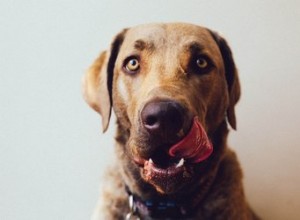
あなたがホリーとジョリーを感じているとき、あなたはあなたの犬に何かお祭りの味をこっそりと誘惑するかもしれませんが、それは必ずしもあなたがそうするべきであるという意味ではありません。たとえば、ペパーミントの樹皮を考えてみましょう。すばらしいおやつ、すばらしい名前ですが、残念ながら、「樹皮」と書かれているものすべてが犬に優しいわけではありません。 ですから、このホリデーシーズン、燃え盛る火のそばでキャンディケインを楽しんでいて、フィドが愛情のこもった目であなたを見上げているとき、あなたは自問するかもしれません。犬はペパーミントを食べることができますか? ペパーミントはどこから来たのですか?

ふわふわ、ふわふわ、甘くて軽いです。それらは、焙煎、トースト、およびトーストすることができます。そして、これらの人が何人かいない状態で、ココアのマグカップを想像できるのは誰ですか? 簡単に言えば、マシュマロは特に冬の季節には絶対的な喜びです。しかし、それは必ずしもあなたがあなたの犬にそれらを与えるべきであるという意味ではありません...それともそうですか? あなたがふわふわの犬を飼っていて、それに合わせてふわふわの御馳走を彼に与えたいと思うなら、それはただ疑問を投げかけるかもしれません:マシュマロは犬に有毒ですか?犬はマシュマロを食べることができますか? マシュマロはどこから来たのですか